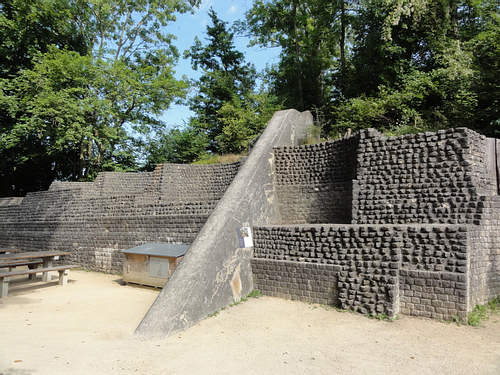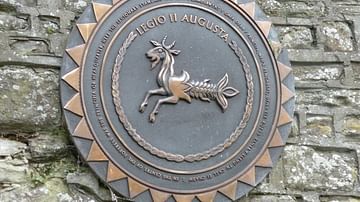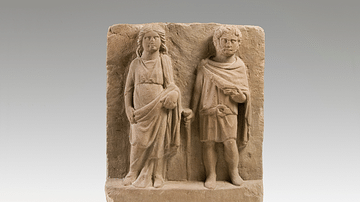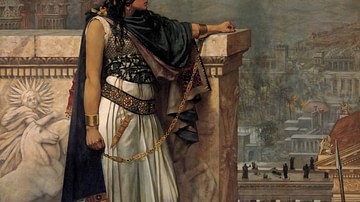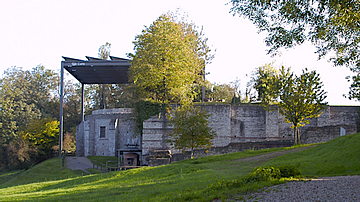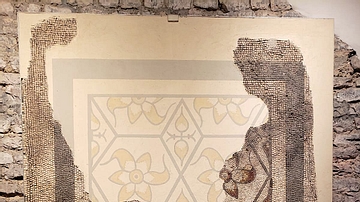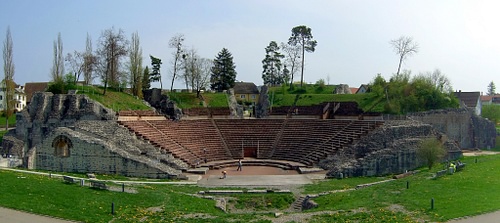
Augusta Raurica is a former Roman colony and city located on the Rhine River some 11 km (7 miles) east of the modern Swiss city of Basel, in between the towns of Kaiseraugst and Augst. Founded by Lucius Munatius Plancus (90 BCE - 15 BCE) around 44-43 BCE, Augusta Raurica is the oldest Roman colony constructed along the Rhine. The colony grew quickly into a city and by c. 200 CE, Augusta Raurica had between 10,000-20,000 inhabitants in its short-lived heyday. Despite its rapid growth in just three centuries, constant attacks by the Alemanni, an earthquake around 250 CE, and continued political unrest in Roman Rhaetia caused the majority of Augusta Raurica's population to abandon their city.
Celtic Origins & Roman Foundation
The area in and around Augusta Raurica had been settled by a Celtic tribe commonly referred to as the "Raurici" by historians. Before the Romans entered the region, the Raurici built a Celtic oppidum and settled close to the Rhine River. This tribe along with the Helvetii and others attempted to settle lands in eastern France at the beginning of Julius Caesar's Gallic Wars (58-50 BCE). They were defeated by Julius Caesar at the Battle of Bibracte in what is present-day France in 58 BCE, and they relocated back east towards what is present-day Switzerland. Julius Caesar's success in the Gallic Wars ensured that areas on the southern and western bank of the Rhine would come under Roman supremacy.
Lucius Munatius Plancus founded Augusta Raurica c. 44-43 BCE, however, effective colonization was delayed due to the protracted conflict resulting from the civil wars and foreign conflicts following the assassination of Julius Caesar. The brief military campaigns of Aulus Terentius Varro Murena (d. 24 BCE) against the Raetians in 16-15 BCE helped Augustus Caesar secure control over all of what is present-day Switzerland. Roman colonization at Augusta Raurica thus dates from c. 15 BCE, during the reign of Augustus Caesar (r. 27 BCE - 14 CE). The colony was named in honor of the Roman emperor; the Romans built the city with wood from nearby forests on a plateau near the town of Augst and within close proximity of the Rhine River.
Augusta Raurica's Heyday
By c. 50 CE, Augusta Raurica was rebuilt with many new buildings erected in stone. The Roman frontier and limes against the Germanic tribes moved further north and east, and Augusta Raurica transformed into a thriving commercial and residential city. The city's location on the Rhine River and its geographic location between Gaul, Italia, Germania, Raetia, and the Danube River made it ideally suitable as a trading entrepôt. Augusta Raurica held the status of civitates or “capital” of the Celtic Rauraci tribe, which received the legal status of incolae (inhabitants), and Augusta Raurica was governed under republican constitutions similar to that of Rome. While Roman coloni (colonists) held considerable political authority and cultural influence in the first century at Augusta Raurica, intermarriage and the comingling of Celtic and Latin culture helped to catalyze the beginnings of a Gallo-Roman culture. A finger ring with a seven-branched candelabrum (Menorah) found at Augusta Raurica strongly suggests that some inhabitants may have been Jewish too.
3rd Century CE Crises & Decline
The 3rd century CE brought immense challenges to the Roman Empire - historians typically refer to this epoch as the “Crisis of the Third Century” (235-284 CE) - and in particular to the empire's border regions along its northern and eastern frontiers. While civil wars and epidemics ravaged the Roman populace, the economic stability that allowed Augusta Raurica to thrive disappeared. The evacuation of the Limes Germanicus and the Agri Decimates c. 260 CE by Emperor Gallienus (r. 253-268 CE), which protected Augusta Raurica and the region from Alemannic incursions into Upper Germania and Raetia, brought the border and the Alemanni uncomfortably close to the city. A devastating war between the Gallic Empire and Rome from 260-276 CE additionally interrupted commerce and vital trade routes between the northern and southern halves of the Roman Empire. Although Augusta Raurica lost a sizable portion of its inhabitants to disease and poverty, the Romans still recognized the strategic value of the city.
In or around 280 CE, the Romans built and fortified a wall and moat to protect the city's small, but remaining population. When the Roman erected a new fortress on the Rhine River c. 300 CE just next to Augusta Raurica - the Castrum Rauracense in present-day Kaiseraugst - much of the Augusta Raurica was either in ruins or entirely abandoned. The new fortress offered protection to citizens as well as the Legio I Martia, which was stationed there. Emperor Constantius II (r. 337-361 CE) and Julian (r. 361-363 CE) used Castrum Rauracense as a military base in their efforts to halt the onslaught of the Alemanni in the 4th century CE too. Consistent raids by the Alemanni c. 351-352 CE destroyed the fortress, prompting a complete reconstruction of Castrum Rauracense.
Around the year 400 CE, the Roman army left Castrum Rauracense, and Roman power across what is now Switzerland retreated towards the Italian peninsula. The Alemanni who moved into the region of what today comprises German-speaking Switzerland, filled the political and cultural vacuum following the departure of the Romans. They intermarried with the remaining Gallo-Roman population, and they continued to utilize the Roman fortresses and defensive structures over the course of the early Middle Ages. Over the next few centuries, however, the Alemanni favored the city of Basel to the ancient city of Augusta Raurica and the fortress town of Castrum Rauracense. The former Roman settlements at Kaiseraugst and Augst became fishing villages during Basel's rapid ascent from the 7th century CE onwards.
Archaeological Remains
The restored ruins at Augusta Raurica are perhaps the most evocative in all of Switzerland. The Roman theatre in the city sat 8,000 people and is still used today for special performances. The Roman Forum of Augusta Raurica can still be visited as well as the Roman sewers and the main aqueduct. Archaeologists have also unearthed smaller ruins of a commercial nature - a bakery, for example - and their excavation work continues today.

